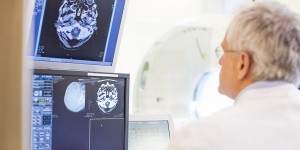By Mariano Garcia de Palau

Born in Barcelona, 17 February 1956. Graduated in medicine and surgery from the University of Barcelona in 1979. For 38 years has worked as an emergency physician in the area of occupational medicine. He became interested in cannabis by chance, and for the last 15 years has studied its therapeutic uses.
Currently he continues to advise on cannabinoid treatments and performs clinical work with patients, collaborates with various organizations and associations, serves as Senior Consultant for Grupo Curativa Colombia and is a spokesperson for the Spanish Medical Cannabis Observatory.
"Without the Endocannabinoid System, the use of the cannabis plant would have no effect on our body."
Just as we are able to synthesize in our body substances that mimic the effects of opiates such as morphine, and we call endorphins, we can also synthesize substances that mimic the effect of cannabinoids in the cannabis plant, and we call them endocannabinoids.
About 450 million years ago, during the Cambrian period, in Deuterostomes or animals with axial symmetry, a basically biochemical system evolved, whose purpose is the regulation of different vital functions in these organisms. Many years later, this system, was called the Endocannabinoid System or ECS, and has lasted until the present day, evolving in complexity, as organisms have become more complex and skilled in different functions.
It consists basically of active molecules, or endocannabinoids, which can be synthesized in many cells of our body and act through a series of specific receptors, or cannabinoid receptors, which are widely distributed in the cells of different tissues.
In 1992, Professor Mechoulam and his team, in Israel, discovered the first endogenous cannabinoid, produced by our own body. They identified it in brain structures. They called it Anandamide, (derived from Sanskrit, meaning supreme happiness), or arachidonylethanolamide, AEA. Subsequently, 2 Arachidonyl.glycerol was discovered, and others such as Noladine, Virodamine, N-arachidonyl dopamine, etc.
How important is this discovery? As it turns out that our organism, and that of many species very far from us from an evolutionary point of view, possess the ability to synthesize endocannabinoids when needed, to maintain the homeostasis or internal equilibrium of the organism.
The ECS is a complex modulator of multiple functions of our organism. It is involved in the regulation of such important functions as body temperature control, intake and control of appetite, nociception or perception of pain, control of neuronal excitability, learning tasks, emotions, cognitive processes, memory area, sensory perception, motor activity, adiadocokinetics (movements ), reproductive system, sexual activity or libido, sleep regulation, mood regulation, stress management, metabolic regulation, endocrine regulation, modulates growth, differentiation, and cell survival. In short, it is a system that undoubtedly contributes to the homeostatic balance of our organism, and that of many species very far away from us in the evolutionary sense. It is probably necessary for the survival of the species that possess it. It already appears in the first weeks of gestation in some species, so its function is necessary for proper embryonic development, also in mammals, of course.
For cannabinoids to exercise their function, they must be coupled to special cell structures called receptors, and depending on which receptor is activated or inhibited, basically, one or the other biological response occurs. All cannabinoids act in the same way, through the same receptors.
We can now consider endocannabinoids or cannabinoids produced by the body itself, the phytotocannabinoids that come from the cannabis plant, and the synthetic cannabinoids produced by laboratories.
They all act in the same way, through the ECS receivers
There are different molecules that can act on ECS, but not all of them generate the same effects and above all they are very different in toxicity in many cases. Attempts have already been made to act on ECS with synthetic molecules and the result was disastrous, with deaths and product withdrawal in the case of Rimonabant in 2009, after passing the clinical trial. And also the unfortunate case of the Portuguese Bial laboratory, whose trial in France in 2016 had to be suspended because of death.
Phytotocannabinoids have never shown toxicity that can generate vital risk for the patient, nor has acute intoxication been a direct cause of death in any user.
The first receptors described were CB1 and CB2
The distribution of cannabinoid receptors in our body is unique. CB1 receptors are found mainly in the central nervous system, in areas related to cognitive functions, memory, anxiety, pain, sensory perception, visceral perception, motor coordination, and areas related to some endocrine functions. We also find them in some areas of the peripheral nervous system, testicles, heart, small intestine, prostate, uterus, bone marrow, vascular endothelium.
CB2 receptors are predominantly found in immune system-related structures, B and T lymphocytes, monocytes, macrophages, glial CNS cells, in addition to the spleen. The distribution of CB receptors is completely different from that of other receptors existing in organisms, but it is very similar from one species to another, which allows us to think that their physiological function has been maintained during evolution.
GPR55 receptors are found only in mammals, not in birds or fish. This is an evolutionary leap and a further adaptation to the complexity of mammals, compared to other species. Distributed in adrenal glands, spleen, digestive system and central nervous system.
It is widely distributed by the CNS, and we find these receptors in Caudado and Putamen nuclei, Hippocampus, Thalamus, Hypothalamus, prefrontal cortex, and cerebellum.
These brain nuclei control very important functions, and the ECS expresses many receptors in these structures. It is in these brain areas, among others, that the ECS controls the network of neurotransmitters, which are the molecules that transmit interneuronal information, to activate or disable certain functions, and maintain an adequate response of the organism to the environment. Neurotransmitters regulate, among many parameters, sleep, mood, neuronal activity, movement, memory, etc. The ECS can act on all neurotransmitters, as a general regulator, although many pathways of neurotransmitters have their own regulatory mechanisms. It is the CHIEF of regulation, and that is why we think that when the ECS is not functioning properly, various pathologies or common symptomatology can be generated in multiple diseases that may have their origin in this malfunction of the ECS.
Endocannabinoids behave in CNS as neurotransmitters, but are not stored in synaptic vesicles, but are inactivated locally, returning to their intracellular precursors. At the level of neural synapses, cannabinoids act as retrograde inhibitors. This system of regulation is unique, and allows us to act on neuronal excitability, in cases of epilepsy, for example. Endocannabinoids are synthesized, act and inactivated locally. They do not act systemically, that is, in the whole organism, but only do it where it is necessary, in the exact location of our body where it is necessary to regulate some function at the molecular level, for a concrete and selective effect, depending on the type of cell in which endocannabinoid receptors are activated.
We can therefore act with phytotocannabinoids through the ECS, and since this system, as we have seen, controls a multitude of functions, we can modulate a wide range of symptoms.
The ECS is a complex system of regulation, probably the most complex we have. It is necessary to study in depth this complex network of receptors, which determines multiple targets on which we can act with phytotocannabinoids, to control and treat many pathologies or diseases that share common symptoms. Phytocannabinoids are very low toxic molecules, and we know their side effects, which we can easily predict and solve. They are probably not the most potent analgesics or anti-inflammatory drugs, compared to other drugs, nor are they the most effective antiepileptics, nor is their anxiolytic effect the most powerful, but they offer us the possibility to treat patients who no longer have therapeutic options or want to reduce the toxicity of prescribed treatments with very interesting results, because of the appearance of side effects, which are contraindicated in treatment. It is here that phytocannabinoids are very useful for many patients, to improve their quality of life with the safe and controlled use of cannabinoids.
"It is not the cannabis plant that has many effects, it is the Endocannabinoid System that determines them"


